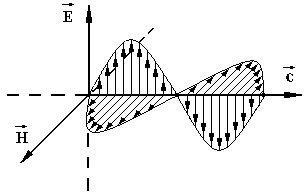
МАРК РЕГНЕРУС ДОСЛІДЖЕННЯ: Наскільки відрізняються діти, які виросли в одностатевих союзах
РЕЗОЛЮЦІЯ: Громадського обговорення навчальної програми статевого виховання
ЧОМУ ФОНД ОЛЕНИ ПІНЧУК І МОЗ УКРАЇНИ ПРОПАГУЮТЬ "СЕКСУАЛЬНІ УРОКИ"
ЕКЗИСТЕНЦІЙНО-ПСИХОЛОГІЧНІ ОСНОВИ ПОРУШЕННЯ СТАТЕВОЇ ІДЕНТИЧНОСТІ ПІДЛІТКІВ
Батьківський, громадянський рух в Україні закликає МОН зупинити тотальну сексуалізацію дітей і підлітків
Відкрите звернення Міністру освіти й науки України - Гриневич Лілії Михайлівні
Представництво українського жіноцтва в ООН: низький рівень культури спілкування в соціальних мережах
Гендерна антидискримінаційна експертиза може зробити нас моральними рабами
ЛІВИЙ МАРКСИЗМ У НОВИХ ПІДРУЧНИКАХ ДЛЯ ШКОЛЯРІВ
ВІДКРИТА ЗАЯВА на підтримку позиції Ганни Турчинової та права кожної людини на свободу думки, світогляду та вираження поглядів
РЕЗОЛЮЦІЯ: Громадського обговорення навчальної програми статевого виховання
ЧОМУ ФОНД ОЛЕНИ ПІНЧУК І МОЗ УКРАЇНИ ПРОПАГУЮТЬ "СЕКСУАЛЬНІ УРОКИ"
ЕКЗИСТЕНЦІЙНО-ПСИХОЛОГІЧНІ ОСНОВИ ПОРУШЕННЯ СТАТЕВОЇ ІДЕНТИЧНОСТІ ПІДЛІТКІВ
Батьківський, громадянський рух в Україні закликає МОН зупинити тотальну сексуалізацію дітей і підлітків
Відкрите звернення Міністру освіти й науки України - Гриневич Лілії Михайлівні
Представництво українського жіноцтва в ООН: низький рівень культури спілкування в соціальних мережах
Гендерна антидискримінаційна експертиза може зробити нас моральними рабами
ЛІВИЙ МАРКСИЗМ У НОВИХ ПІДРУЧНИКАХ ДЛЯ ШКОЛЯРІВ
ВІДКРИТА ЗАЯВА на підтримку позиції Ганни Турчинової та права кожної людини на свободу думки, світогляду та вираження поглядів
Контакти
- Гідрологія і Гідрометрія
- Господарське право
- Економіка будівництва
- Економіка природокористування
- Економічна теорія
- Земельне право
- Історія України
- Кримінально виконавче право
- Медична радіологія
- Методи аналізу
- Міжнародне приватне право
- Міжнародний маркетинг
- Основи екології
- Предмет Політологія
- Соціальне страхування
- Технічні засоби організації дорожнього руху
- Товарознавство продовольчих товарів
Тлумачний словник
Авто
Автоматизація
Архітектура
Астрономія
Аудит
Біологія
Будівництво
Бухгалтерія
Винахідництво
Виробництво
Військова справа
Генетика
Географія
Геологія
Господарство
Держава
Дім
Екологія
Економетрика
Економіка
Електроніка
Журналістика та ЗМІ
Зв'язок
Іноземні мови
Інформатика
Історія
Комп'ютери
Креслення
Кулінарія
Культура
Лексикологія
Література
Логіка
Маркетинг
Математика
Машинобудування
Медицина
Менеджмент
Метали і Зварювання
Механіка
Мистецтво
Музика
Населення
Освіта
Охорона безпеки життя
Охорона Праці
Педагогіка
Політика
Право
Програмування
Промисловість
Психологія
Радіо
Регилия
Соціологія
Спорт
Стандартизація
Технології
Торгівля
Туризм
Фізика
Фізіологія
Філософія
Фінанси
Хімія
Юриспунденкция
The short theory
Light is a transverse wave. The direction of the vibrating electric and magnetic vectors are at right angles to the direction of propagation ( Fig.10.1 ).

Figure 10.1
Light is emitted by a great number of atoms. The plane of oscillations of  vector is not the same in space. The orientations of this vector as well as vector
vector is not the same in space. The orientations of this vector as well as vector  are arbitrary ( Fig. 10.2a ).
are arbitrary ( Fig. 10.2a ).
This is so called a natural or unpolarized light. If there is an interaction of light and substance the effect of polarization takes place.

Figure 10.2
A plane polarized wave is shown in Fig.10.2b. The plane of oscillations of  vector is regulated. There are three ways of producing a polarized light: reflection of light; refraction of light; transmission of light through anisotropic substance ( calcite crystal CaCO3 ).
vector is regulated. There are three ways of producing a polarized light: reflection of light; refraction of light; transmission of light through anisotropic substance ( calcite crystal CaCO3 ).
According to the law of Malus, the intensity of light transmitting through the analyzer can be calculated by the next formula
 , (10.1)
, (10.1)
where I is a transmitted intensity ; Im is the maximum value of the transient intensity, it is equal to the intensity of light, falling on the analyzer; θ is the angle between the plane of polarizer and the plane of analyzer.
Читайте також:
- A hand had appeared amongst the flames, groping as though to catch hold of something; a stubby, short-fingered hand covered in ugly old-fashioned rings.
- A Short Course in Human Relations
- A Short Course in Human Relations
- A short theory
- A young witch with short blonde hair poked her head around the curtain; Harry saw that she too was wearing magenta staff robes.
- A. Make up short dialogues expressing your opinion, agreeing or disagreeing. Use the prompts given below.
- A. Read the short extract from the interview and recognize any constructions expressing Future Actions.
- As she named each drink, she gave her short wand a wave, and a cup or glass of it appeared on her desk.
- B) Give a short description of some other disease using a few phrases from the text above.
- B. Listen to part of a radio interview with a historian talking about Einstein. Then complete each sentence with a word or a short phrase. (Track 17, CD2)
- But Mrs. Cole pulled up short, and there was nothing blurry or vague about the inquisitorial glance she shot Dumbledore over her gin glass.
- Changes of Short Vowels in Early New English
| <== попередня сторінка | | | наступна сторінка ==> |
| Conrtol questions | | | Experimental part |
|
Не знайшли потрібну інформацію? Скористайтесь пошуком google: |
© studopedia.com.ua При використанні або копіюванні матеріалів пряме посилання на сайт обов'язкове. |